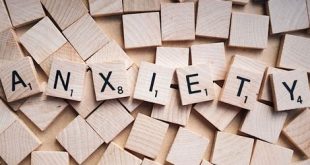Introduction
In today’s fast-paced and demanding world, stress has become a common part of our daily lives. It is vital to find healthy ways to manage and relieve stress to maintain our well-being. Self-regulation techniques offer powerful tools for navigating stress and finding balance. By practicing self-regulation, we can develop the ability to respond to stressful situations more effectively and cultivate a sense of inner calm. In this article, we will explore practical self-regulation techniques that can help us relieve stress and bring greater harmony into our daily lives.
Understanding Stress and Self-Regulation
Stress is the body’s natural response to challenging or overwhelming situations. While some stress can be beneficial, chronic or excessive stress can have detrimental effects on our physical and mental health. Self-regulation refers to our ability to manage our thoughts, emotions, and behaviors in response to stressors. It involves recognizing and understanding our stress triggers and adopting strategies to regulate our reactions and find a sense of balance.
Deep Breathing Techniques
One of the most accessible and effective self-regulation techniques for stress relief is deep breathing. Deep breathing exercises activate the body’s relaxation response, reducing heart rate, blood pressure, and cortisol levels. One simple technique is diaphragmatic breathing, where we focus on taking slow, deep breaths, allowing the abdomen to rise and fall with each breath. Deep breathing helps to calm the nervous system, promote relaxation, and bring us back to the present moment.
Mindfulness Meditation
Mindfulness meditation is a powerful self-regulation practice that involves intentionally paying attention to the present moment without judgment. By cultivating mindfulness, we develop a heightened awareness of our thoughts, emotions, and sensations as they arise. This awareness enables us to observe our stress responses without becoming overwhelmed by them. Regular mindfulness meditation practice enhances our ability to recognize stress triggers and respond to them in a more balanced and compassionate way.
Progressive Muscle Relaxation
Progressive muscle relaxation is a technique that involves systematically tensing and relaxing different muscle groups to release physical tension and promote relaxation. By intentionally contracting and releasing muscles, we become more attuned to the sensations in our bodies, helping us identify areas of tension and stress. Progressive muscle relaxation is a valuable self-regulation tool for reducing physical symptoms of stress and promoting a sense of calm.
Journaling and Expressive Writing
Writing can be a powerful tool for self-reflection and self-regulation. Journaling and expressive writing allow us to express our thoughts, feelings, and experiences on paper, providing an outlet for emotional release and introspection. By consistently journaling, we can gain insight into our stressors, patterns of thinking, and emotional responses. This self-awareness empowers us to make conscious choices and develop healthier coping strategies.
Engaging in Physical Activity
Regular physical activity is a crucial component of self-regulation and stress management. Exercise releases endorphins, which are natural mood boosters, and reduces the levels of stress hormones in the body. Engaging in activities such as walking, jogging, yoga, or dancing not only improves physical fitness but also allows us to channel our energy, reduce tension, and clear our minds. Finding a form of exercise that we enjoy and incorporating it into our daily routine can significantly contribute to stress relief and overall well-being.
Practicing Self-Compassion
Self-compassion is an essential aspect of self-regulation and stress relief. It involves treating ourselves with kindness, understanding, and acceptance, especially during challenging times. When faced with stress, we often tend to criticize ourselves or engage in negative self-talk. Practicing self-compassion means acknowledging our struggles and responding with empathy and self-care. By cultivating self-compassion, we develop resilience and a greater capacity to navigate stress with grace and self-kindness.
Creating Boundaries and Prioritizing Self-Care
Establishing healthy boundaries in our personal and professional lives is crucial for self-regulation and stress management. Learning to say no when necessary, setting realistic expectations, and allocating time for self-care are essential aspects of finding balance. Prioritizing self-care activities such as getting enough sleep, eating nutritious meals, engaging in hobbies, spending time in nature, and nurturing social connections allows us to recharge and build resilience against stressors.
Seeking Support
Lastly, seeking support from trusted individuals or professionals can be instrumental in self-regulation and stress relief. Talking to a supportive friend, family member, or therapist can provide an opportunity to share our concerns, gain perspective, and receive guidance. Sometimes, external support can help us identify blind spots, explore new coping strategies, and develop healthier approaches to stress management.
Conclusion
Incorporating self-regulation techniques into our daily lives allows us to navigate stress more effectively and find balance. By practicing deep breathing, mindfulness meditation, progressive muscle relaxation, journaling, engaging in physical activity, cultivating self-compassion, creating boundaries, prioritizing self-care, and seeking support when needed, we can cultivate resilience and well-being. Remember, self-regulation is a continuous practice that requires patience and commitment. As we incorporate these techniques into our daily routine, we develop a greater sense of self-awareness and the ability to respond to stress in a more balanced and empowered way.
It is important to remember that self-regulation is not about eliminating stress entirely from our lives. Stress is a natural part of life, and some level of stress can actually be beneficial for growth and motivation. The goal of self-regulation is to manage stress effectively and find equilibrium amidst life’s challenges.
By cultivating self-regulation techniques, we can experience numerous benefits beyond stress relief. These techniques can improve our overall well-being, enhance our ability to concentrate and make clear decisions, strengthen our relationships, and contribute to a greater sense of fulfillment and joy in life.
Incorporating self-regulation techniques into our daily lives starts with a commitment to self-care and self-reflection. It is essential to carve out time each day to engage in practices that support our mental, emotional, and physical well-being. This may involve waking up a few minutes earlier to meditate or journal, scheduling regular exercise sessions, or setting aside quality time for relaxation and self-care activities.
As we embark on this journey of self-regulation, it is crucial to approach ourselves with kindness and patience. Developing new habits takes time and effort, and setbacks are bound to happen. Instead of judging ourselves harshly, we can use these moments as opportunities for learning and growth. By cultivating self-compassion and a non-judgmental attitude towards ourselves, we create a supportive environment for personal transformation.
Finding balance in daily life requires us to prioritize self-care and make conscious choices that align with our values and goals. It involves recognizing our limits, setting boundaries, and allowing ourselves to rest and recharge when needed. It also means being mindful of our obligations and commitments, ensuring that we allocate time and energy for activities that bring us joy and fulfillment.
In conclusion, self-regulation techniques offer powerful tools for relieving stress and finding balance in our daily lives. By incorporating practices such as deep breathing, mindfulness meditation, journaling, engaging in physical activity, practicing self-compassion, creating boundaries, prioritizing self-care, and seeking support, we can develop resilience and well-being. Remember, self-regulation is a continuous journey that requires dedication and practice. As we cultivate these techniques, we empower ourselves to navigate life’s challenges with grace, authenticity, and inner peace.
 Live Health Guide–Home
Live Health Guide–Home




